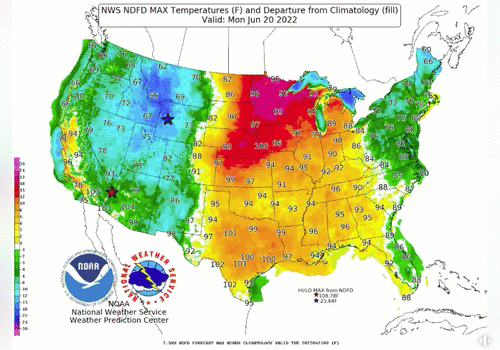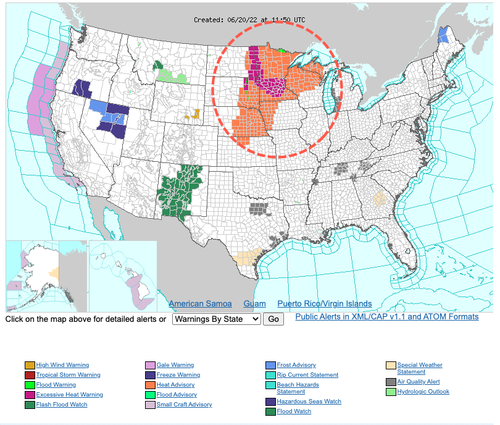“Dangerous” Heat Dome Shifts Eastward, Triple-Digit Temps Expected For Southeast
A heat dome hovering over the northern Plains has begun to shift eastward early this week, expected to bring triple-digit temperatures across southern and eastern regions of the U.S.
“Dangerous heat will continue to make headlines from the central U.S. to the Southeast. One more day of well above normal, near-record and record-breaking heat is expected from the central Plains to the Upper Midwest.
“Excessive Heat Warnings remain in effect for the Red River Valley of the North and the greater Minneapolis area. High temperatures up to 100 degrees along with high humidity will lead to head indices into the mid-100s …
“The center of the heat wave begins to transition further east on Tuesday into the Great Lakes, with forecast highs in the mid- to upper 90s, up to 15-20 degrees above normal.
“In addition to hot high temperatures, very warm, near-record and record-breaking low temperatures in the 70s will provide little relief from the heat overnight. Temperatures will also warm up across the Southeast on Wednesday, with highs into the low 100s expected. Maximum heat indices may reach as high as 110 degrees along the central Gulf Coast when factoring in high humidity. High temperatures in general will be hot and a bit above normal across most of the central and eastern U.S. outside of the Northeast and Mid-Atlantic,” the National Weather Service wrote in an early morning weather outlook.
At 0800 ET, at least nine million people across eight northern and central U.S. states, including Minnesota, Iowa, North Dakota, South Dakota, Michigan, Wisconsin, Nebraska, and Kansas, were under heat alerts. That number should exponentially increase as the heat dome moves eastward.
Summer begins Tuesday, and large swaths of the Central and southern parts of the country could see above-average max temperatures through the end of the month.
Above-average weather will increase cooling demand from households and businesses, may strain power grids, and result in higher electricity costs for tens of millions of Americans, or worst, power blackouts.

